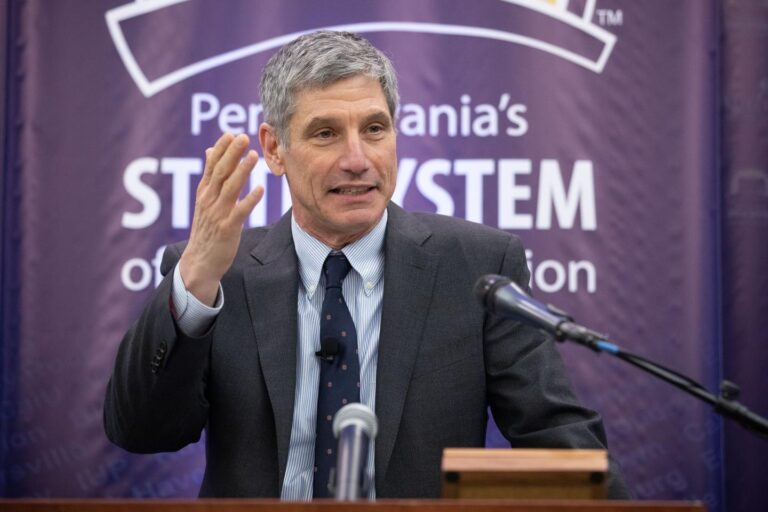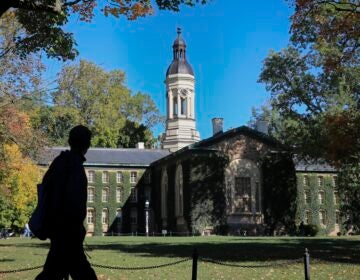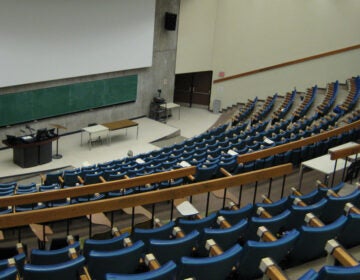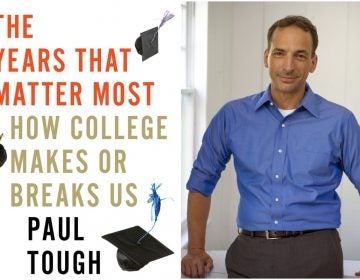Pa.’s state universities facing immediate hit of up to $100 million as lawmaker floats closures as worst-case scenario
The losses are the result of a system-wide shutdown in response to the coronavirus outbreak and primarily account for refunded room and board payments.

(Commonwealth Media Services)
This story was produced as part of a joint effort among Spotlight PA, LNP Media Group, PennLive, PA Post, and WITF to cover how Pennsylvania state government is responding to the coronavirus. Sign up for Spotlight PA’s newsletter.
The state’s 14 public universities are projected to lose from $70 million to $100 million this spring semester, which a top official conceded will require a “dramatically” accelerated plan for reform, though he balked at the idea of closures.
The losses are the result of a system-wide shutdown in response to the coronavirus outbreak and primarily are refunded room and board payments, Chancellor Dan Greenstein said in an interview. That reality plus a shrinking pool of high school graduates to recruit will require major changes.
“Will we change into that future? Absolutely,” Greenstein said in a March 28 video message to students, one of several he’s posted during the pandemic. “We were already on that path. Our financial circumstances were very challenged before the pandemic. They’re more challenged now.”
Even before the COVID-19 pandemic, the Pennsylvania State System of Higher Education was facing serious financial questions, having seen enrollment decline by 20% in the last decade. Its state appropriation has slowly recovered from a deep cut by Gov. Tom Corbett in 2011.
Earlier this year, the state system asked the legislature to increase its budget by 2%, to $487 million for the next school year. But historically, a hit to the state’s finances has meant cuts are in the offing for the system and higher education in Pennsylvania.
With the state forecasting a budget shortfall of up to $4 billion, Republicans in the legislature are saying mergers and even closures may be ahead.
“The status quo won’t lead to the long-term solvency of the system,” said Sen. Scott Martin (R., Lancaster), who is an appointee to the system’s Board of Governors, which determines tuition increases, appoints presidents, and oversees curricula. “I don’t know if [it’s enough] in the short term for a lot of the schools.”
Martin added closures were a “worst-case scenario.”
Adjusted for inflation, the system’s current state appropriation is practically unchanged from 2011. Pennsylvania ranks near the bottom for per-capita funding of higher education, census data shows.
David Pidgeon, a spokesperson for the state system, declined to “speculate” on what changes the system is considering at this time to address the financial impact of the virus. But in an interview, Greenstein rejected closures as an option.
“If anything, closures were a bad idea” before the pandemic, he said. “They’re probably worse now.”
Greenstein said these schools are worth protecting now more than ever as they serve a dual purpose for their communities, operating in many cases as a top employer in the area in addition to preparing new workers to join the labor force.
The schools provide other value as well.
Kaitlyn Myers, a freshman at Slippery Rock University, spent her first semester at the Butler County university as a student worker in its office for community-engaged learning, traveling to a local nursing home to visit a 101-year-old woman. That work was cut short for her and other volunteers due to COVID-19, as nursing homes limited visitors and Slippery Rock students had to move out of their residence halls to start online learning to slow the spread of the virus.
“I didn’t do a lot of service learning or volunteering because my hometown was small and I didn’t think there were a lot of opportunities,” Myers, of Meadville, said. “Slippery Rock promotes it.”
The state system has struggled to enroll students in recent years, with all but one school — West Chester University — reporting a decline in enrollment since the peak in 2010. Cheyney, Clarion, Edinboro, Lock Haven, and Mansfield Universities are among those that have struggled most, with Cheyney’s enrollment dropping to only 618 students for this academic year.
Gov. Tom Wolf promised last year that Pennsylvania would foot the bill for Cheyney’s $40 million debt to save the United States’ first historically black university from closure.
In this year’s budget proposal, Wolf called on the legislature to repurpose $250 million from a controversial racehorse fund to create a scholarship program for low- and middle-income students in the state system. Wolf on Tuesday told reporters he is still pushing for the scholarship fund and his entire budget proposal despite the pandemic.
Since Greenstein was appointed chancellor in 2018, the system has attempted several cost-saving measures, like a retirement incentive in 2019 that many faculty accepted, said Jamie Martin, vice president of the system’s faculty union.
In February, Greenstein issued a directive to all university presidents to limit the number of adjunct faculty, eliminate programs with low enrollment, leave vacant staff or faculty positions unfilled unless “essential,” and begin collaborating on a plan for a system-wide educational program with “cross-campus” instruction.
Martin said he and Sen. Tommy Tomlinson (R., Bucks) are in the early stages of preparing legislation to address the impact of the coronavirus on the institutions. Martin’s office declined to provide details but his chief of staff said the system needs to be “reformed, right-sized, [and] stabilized.”
The Board of Governors is limited in actions it can take without legislative approval. Rep. Curt Sonney (R., Erie) has introduced legislation that would allow it to consolidate, close, or create an institution. This legislation is still sitting in the House Education Committee.
State schools remain the most affordable options for a four-year education in Pennsylvania, costing around $8,000 for tuition per academic year. But tuition has continually risen.
Greenstein said keeping tuition rates affordable should be a priority, especially as higher education institutions project more people will seek a new degree to compete in the state’s diminished employment market and economy.
Ishra Musa, a sophomore speech and hearing major at Edinboro University, chose the Erie-area school so she could commute and keep costs down, she said. The only other schools nearby were private and much more expensive, like Mercyhurst University, where the $37,170 price tag is nearly four times the tuition at Edinboro.
Schools will have the power to individually determine tuition rates in the fall, though Greenstein said it was premature to say if they will be increased.
 100% ESSENTIAL: Spotlight PA provides its journalism at no cost to newsrooms across the state as a public good to keep our communities informed and thriving. If you value this service, please give a gift today at spotlightpa.org/donate.
100% ESSENTIAL: Spotlight PA provides its journalism at no cost to newsrooms across the state as a public good to keep our communities informed and thriving. If you value this service, please give a gift today at spotlightpa.org/donate.
WHYY is your source for fact-based, in-depth journalism and information. As a nonprofit organization, we rely on financial support from readers like you. Please give today.


![CoronavirusPandemic_1024x512[1]](https://whyy.org/wp-content/uploads/2020/03/CoronavirusPandemic_1024x5121-300x150.jpg)


